Physics on the Kitchen Table: Base Isolated Buildings
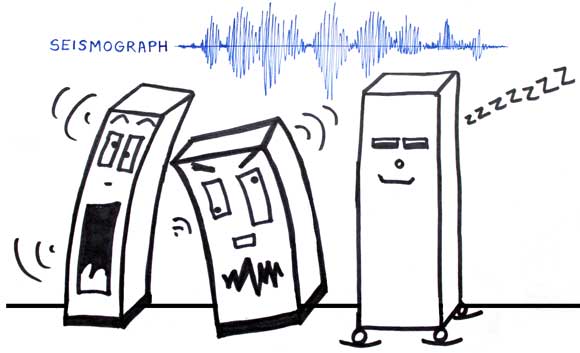
Most buildings today are built directly on the ground, which fixes the base of the building to the earth. Because the base of the building is connected to the ground, when the ground moves the building also moves, causing the building to sway back and forth with the ground.
What if there was some way to "detach" the base of a building from the ground so that the building wouldn’t notice the earth moving beneath it? There is! Base isolation is a technique developed to prevent or minimize damage to a building during an earthquake. Let's explore the difference between how base isolated buildings and fixed base buildings perform during an earthquake.
What you Need- two 8.5" x 11" sheets of paper
- tape
- four ping pong balls
- scissors
- a flat, smooth surface like a table top or a kitchen counter top
Begin by constructing the building. To do this, you will use:
- one 8.5" x 11" sheet of paper
- tape
- four ping pong balls
- Create a crease down the center of the paper by folding it in half so that the short sides of the paper match up. Then, fold each short side of the paper in to align with the center crease. The three creases created by this step will divide the paper into four equally sized rectangles. If your paper looks like Figure A, move on to the next step.
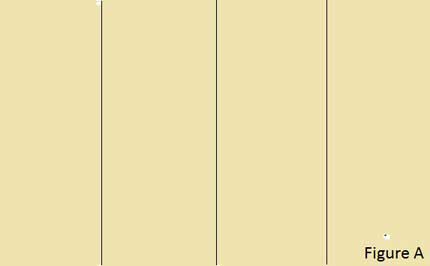
- Fold the bottom corners of the paper in toward the outer crease lines. See Figure B.
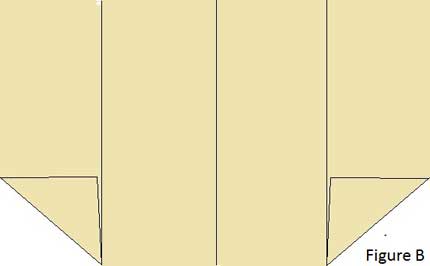
- Fold the bottom portion of the paper up to create a horizontal crease line along the top of the folded corners. See Figure C.
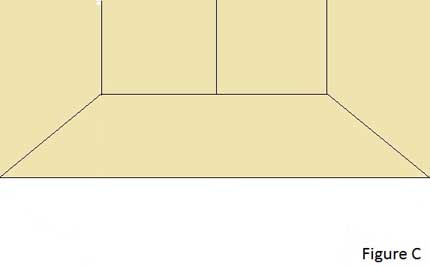
- Using the scissors, make three cuts along the bottoms of the vertical crease lines to the horizontal crease line. Figure D shows the cut lines in red.
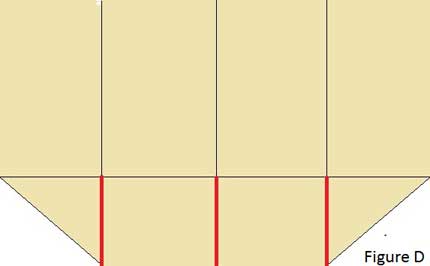
- This is the tricky part! Now we are going to turn this piece of paper into a 3-dimensional building model. To do this, bring the short sides of the paper together and secure with tape. This should draw the four flaps at the base of the building in toward each other. Fold the four flaps up, one on top of the other, to create a base for the building and secure with tape. The assembled building should resemble a box with no top. See Figure E.
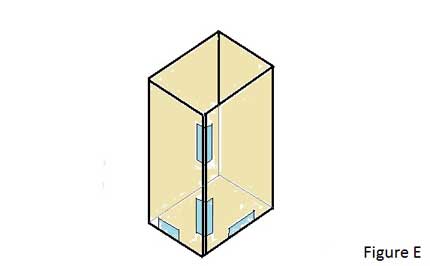
- To make the building look more realistic, use a marker to draw some windows and a door. See Figure F.
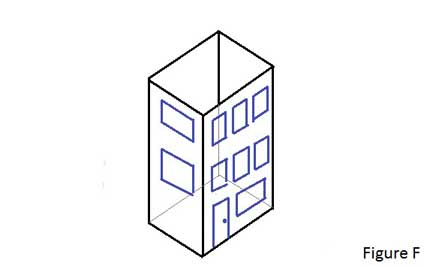
- To create the building's foundation, tape a ping pong ball at the bottom of each of the building corners. The best way to tape each ping pong ball is to form a loop with a 1.5" long piece of tape so that the sticky side faces outward. Place the tape loop on top of a ping pong ball and press it firmly to a corner on the base of the building. Voila...a building! Your building should look similar to Figure G.
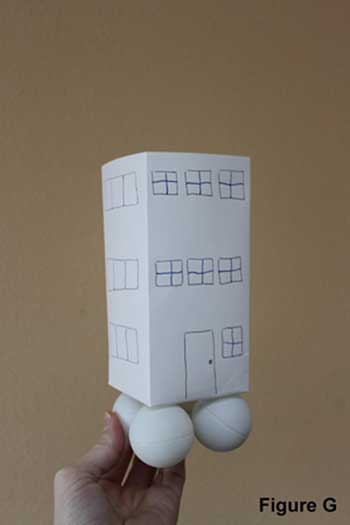
Good work! Now it's time to get shaking! We will investigate how buildings perform during an earthquake with and without base isolation. The building that you just constructed will be used for both the fixed base building (which is not base isolated) and the base isolated building tests.
First, test what happens to a building that is not base isolated during an earthquake.- Lay an 8.5" x 11" sheet of paper on a smooth, flat surface like a kitchen table. This sheet of paper represents the ground. Tape one of the building's ping pong balls to the center of the paper using the tape ring technique described in STEP 7 above.
- Firmly press the taped ball into the paper to ensure that it is properly attached. Make sure that you only tape one ball! You have just made your building a fixed base building.
- To simulate an earthquake, place your fingers on top of the paper and rapidly move your hand back and forth. The movements should be small (no more than an inch in either direction) but fast. Pay attention to how the building reacts to the earthquake. We will want to compare this building's response to the response of a base isolated building.
- Simply remove the single piece of tape used to secure the building to the flat sheet of paper.
- Set the 8.5" x 11" sheet of paper back on the smooth surface and place the building on the center of the paper. Because our building is no longer taped, attached, to the ground, it is considered a base isolated system.
- 3. Shake the paper with your hand in the same short and rapid shaking movements as before to simulate an earthquake. Pay attention to how the building reacts to the earthquake.
Did you notice a difference between the movements of the building without the base isolation system and the building that was base isolated when the earthquake struck?
What's Going On?
When the ground moves during an earthquake, buildings without base isolation are taken along for the ride. Because the bottom --or base-- of the building is attached to the ground (like in the first experiment), it follows the movements of the shaking earth. The upper portion of the building accelerates in response to the movements of the base and moves much more dramatically. The response of the upper portion of the building depends upon the building's weight, the location of its center of mass, and its natural period (the rate at which it sways back and forth). Each of these characteristics differs from building to building and certain combinations can cause the building's occupants to be taken on a pretty wild ride! When a building is isolated from the ground it will only move a little, if at all, during an earthquake (like in the second experiment). Isolators behave similarly to the suspension system on a automobile, which allows the car to travel over bumpy ground without the occupants getting tossed around.
Does this mean that any buildings without base isolation will topple in an earthquake? NO! There are many, many different ways to engineer a building to withstand an earthquake; base isolation is just one way. The advantage that base isolation has over most of the others is that, because it isolates the building from the ground, the earthquake's energy is absorbed in the isolators instead of throughout the building. This means that, during an earthquake, if you were in a building with base isolators you would feel less shaking than you would if you were standing in a building with a different system for resisting earthquake forces.
What does a real base isolator look like?
You've probably been thinking, "I know I haven't seen any buildings sitting on four giant ping pong balls!" And, you are correct; the ping pong balls were used to model the behavior of a base isolator since their smooth surface allowed the paper to slide back and forth beneath them. There are several different types of base isolators being used today. One of them uses a device that slides along a curved surface. The curved surface is higher on the edges than it is in the middle to contain the ball. During an earthquake, the device rolls freely along the curved surface. Researchers have found that these base isolator systems enable a building to withstand an earthquake six times stronger than it would be able to without base isolation.
Another more common type of base isolation system utilizes flexible pads placed underneath the building that absorb a lot of the earthquake's energy. These pads are constructed of several layers of rubber and steel sheets, and look a lot like a giant sandwich.
More Information
This is a really great, short video clip of a fancier version of our experiment:
http://www.youtube.com/watch?v=ChaqMDc4ces











